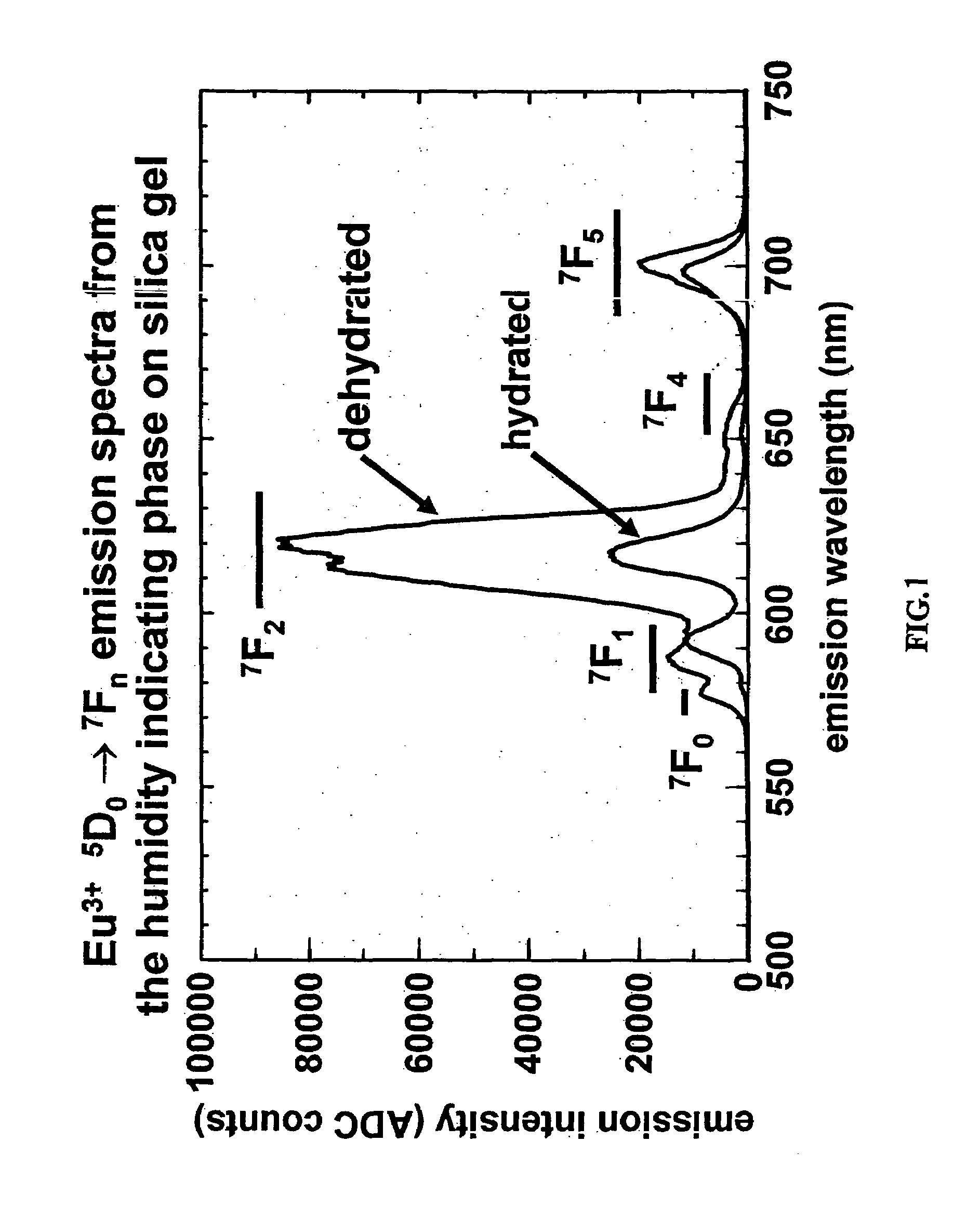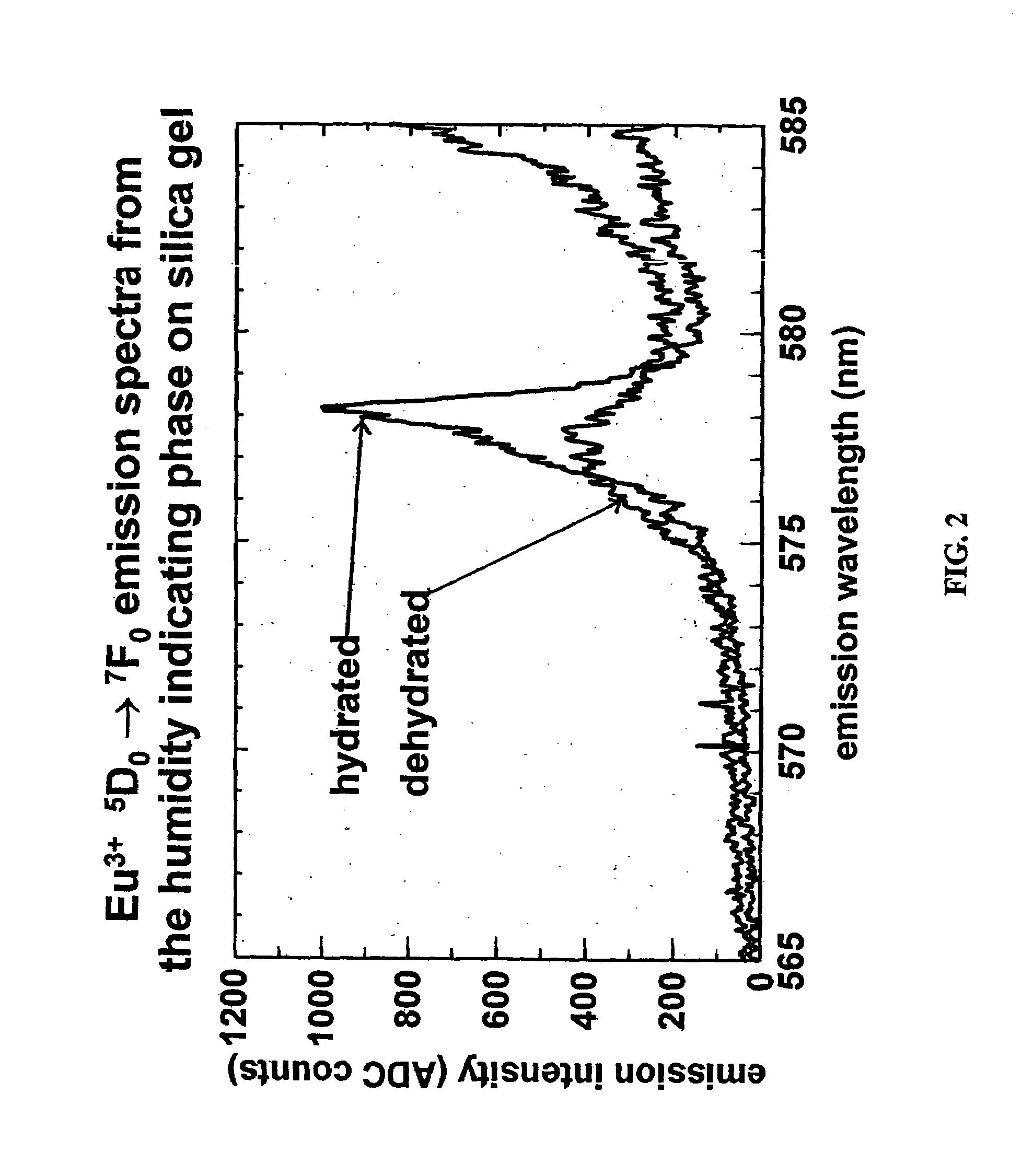Lanthanide-halide based humidity indicators
a humidity indicator and lanthanide halide technology, applied in the field of visual humidity indicators, can solve the problems of poor indicating extremely low relative humidity levels (i.e. below 5%) at common ambient temperatures, affecting the quality of pharmaceuticals or destabilizing munitions, and poor lanthanide halide based humidity indicators work well, and achieve the effect of cost effectiveness
- Summary
- Abstract
- Description
- Claims
- Application Information
AI Technical Summary
Benefits of technology
Problems solved by technology
Method used
Image
Examples
example 1
[0055]An aqueous hydrobromic acid solution (HBr) (containing dissolved free bromine) was formed by mixing liquid bromine (Br2) with aqueous hydrobromic acid (˜48% hydrogen bromide by weight) in an amount sufficient to from a solution with an optical density of 0.90 per cm of optical pathlength at 500 nanometers. 3.34 g of the prepared hydrobromic acid-free bromine solution was mixed with 0.28 g of europium sesquioxide (Eu2O3) and the solution was mixed until the Eu2O3 was dissolved forming a europium-bromide mixture. 2.40 g of water was added to the europium-bromide mixture forming a europium-bromide-water solution. 1.10 g of ammonium bromide (NH4Br) was mixed with the europium-bromide-water mixture to give a humidity indicating solution. 1.15 ml of the humidity indicating solution was added dropwise to 1.00 g of porous, high surface area silica gel. The sorbed silica gel was then dried under nitrogen gas flow until it turned yellow indicating its anhydrous state.
[0056]The present i...
PUM
| Property | Measurement | Unit |
|---|---|---|
| temperatures | aaaaa | aaaaa |
| humidity | aaaaa | aaaaa |
| temperature | aaaaa | aaaaa |
Abstract
Description
Claims
Application Information
 Login to View More
Login to View More - R&D
- Intellectual Property
- Life Sciences
- Materials
- Tech Scout
- Unparalleled Data Quality
- Higher Quality Content
- 60% Fewer Hallucinations
Browse by: Latest US Patents, China's latest patents, Technical Efficacy Thesaurus, Application Domain, Technology Topic, Popular Technical Reports.
© 2025 PatSnap. All rights reserved.Legal|Privacy policy|Modern Slavery Act Transparency Statement|Sitemap|About US| Contact US: help@patsnap.com



